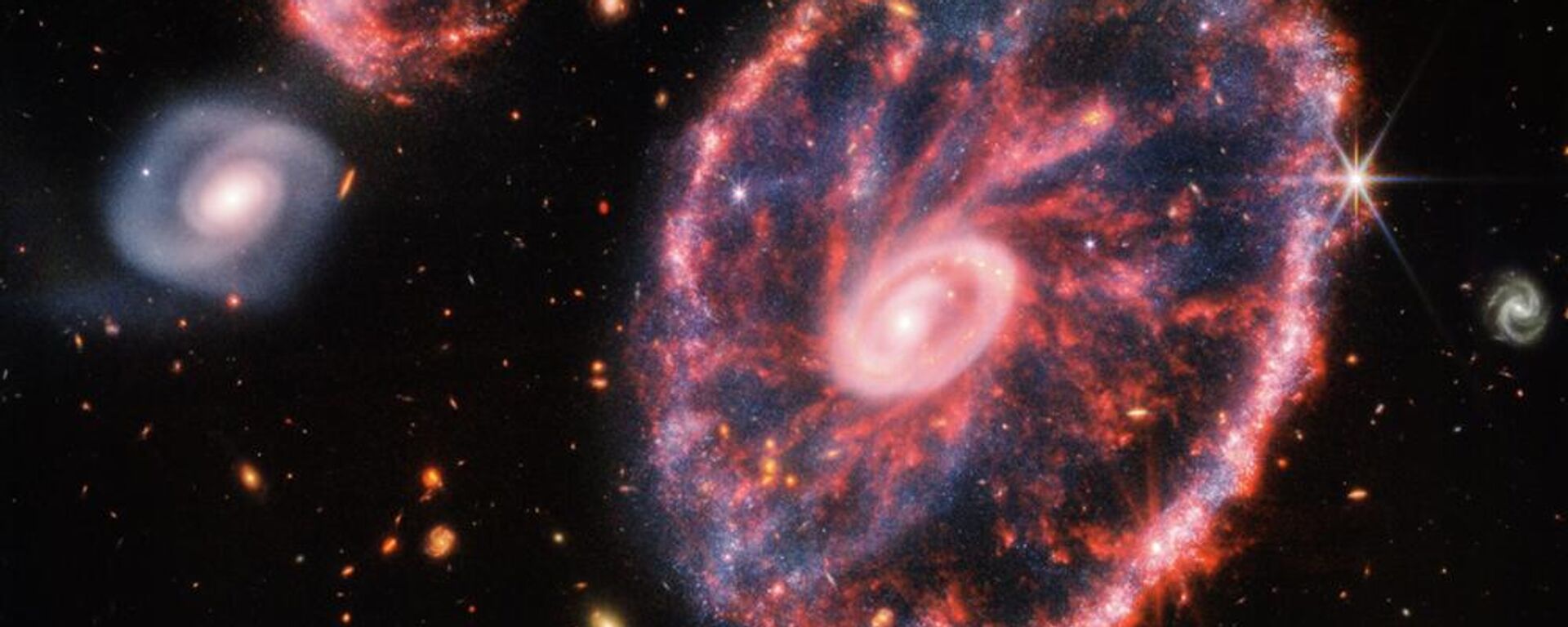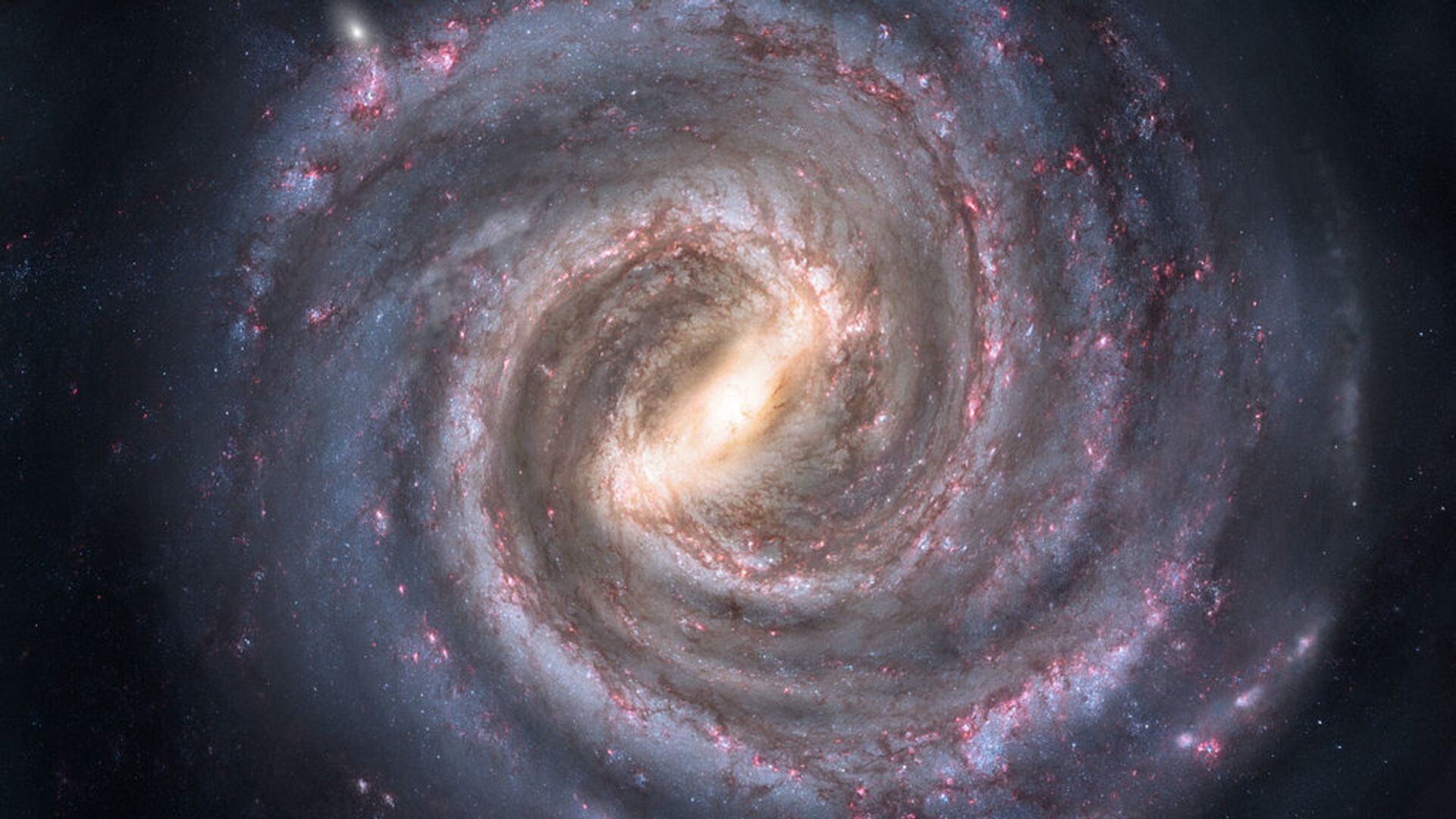https://sputnikglobe.com/20230112/new-microwave-map-of-earths-galaxy-sheds-light-on-polarization-of-milky-way-emission-study-claims-1106246426.html
New Microwave Map of Earth's Galaxy Sheds Light on Polarization of Milky Way Emission, Study Claims
New Microwave Map of Earth's Galaxy Sheds Light on Polarization of Milky Way Emission, Study Claims
Sputnik International
New microwave map of Earth’s galaxy - the Milky Way - offers a unique tool for studying magnetism in the Universe, study says.
2023-01-12T11:28+0000
2023-01-12T11:28+0000
2023-04-21T10:43+0000
science & tech
galaxy
maps
astronomers
milky way
microwaves
magnetic field
radiation
https://cdn1.img.sputnikglobe.com/img/107853/46/1078534683_0:225:1024:801_1920x0_80_0_0_68973250c618179c79d8725c9cd96dde.jpg
A map of the magnetic field of Earth’s galaxy, the Milky Way, has been charted by an international team of scientists.The research, led by Spain’s Instituto de Astrofísica de Canarias (IAC), has presented a highly accurate description of the polarization of the Milky Way emissions, using telescopes that observe the sky in the microwave part of the electromagnetic spectrum. In findings published in Monthly Notices of the Royal Astronomical Society, the team gave a point-by-point account of their research which started a decade ago in 2012.The scientists used the QUIJOTE (Q-U-I JOint TEnerife) Collaboration, located at the Teide Observatory on Tenerife, the Canary Islands, which comprises two 2.5m diameter telescopes.Now, a series of six scientific articles have been presented by the collaboration, in the wake of its decade's work to obtain data with its multifrequency instrument MFI, ;which was operational until 2018.As the QUIJOTE collaboration mapped the magnetic structure of the Milky Way, its research fed into earlier studies dedicated to cosmic microwave background (CMB) radiation. The latter is a so-called “fossil” radiation lingering after the Big Bang, which, according to most scientists, created our universe about 13.7 billion years ago."These maps give a detailed description in a new frequency range, from 10 to 20 GHz, complementary to those from space missions that have previously observed the sky at microwaves, such as Planck (ESA) and WMAP (NASA),” José Alberto Rubiño, the lead scientist on QUIJOTE, said, adding:Polarized Synchrotron RadiationThe new maps presented by the QUIJOTE collaboration have shed light on the recently detected excess of microwave emission at the heart of our Galaxy. Believed to be connected to the decay process of dark matter particles, the excess of radiation, according to findings by the QUIJOTE team, could be polarized.Furthermore, the polarized synchrotron emission from the Milky Way is "much more variable than had been thought,” added Elena de la Hoz, a researcher at the Instituto de Física de Cantabria (IFCA).According to Rubiño, these new findings will help scientists to understand the "energetic processes that took place at the birth of the universe”.
https://sputnikglobe.com/20220823/star-wars-scientists-battle-over-webb-space-telescope-debunking-big-bang-theory--1099888384.html
https://sputnikglobe.com/20221209/mysteries-of-time-capsule-galaxy-eventually-unveiled--1105268052.html
Sputnik International
feedback@sputniknews.com
+74956456601
MIA „Rossiya Segodnya“
2023
News
en_EN
Sputnik International
feedback@sputniknews.com
+74956456601
MIA „Rossiya Segodnya“
Sputnik International
feedback@sputniknews.com
+74956456601
MIA „Rossiya Segodnya“
microwave map of milky way, earth’s galaxy, polarization of milky way emission, unique tool for studying magnetism in the universe,
microwave map of milky way, earth’s galaxy, polarization of milky way emission, unique tool for studying magnetism in the universe,
New Microwave Map of Earth's Galaxy Sheds Light on Polarization of Milky Way Emission, Study Claims
11:28 GMT 12.01.2023 (Updated: 10:43 GMT 21.04.2023) Excess microwave emission was detected coming out of the center of our Galaxy – the Milky Way – around 25 years ago, although its source was unexplained. The QUIJOTE (Q-U-I JOint TEnerife) Collaboration, launched back in 2012, has now offered some possible explanations.
A map of the magnetic field of Earth’s galaxy,
the Milky Way, has been charted by an international team of scientists.
The research, led by Spain’s Instituto de Astrofísica de Canarias (IAC), has presented a highly accurate description of the polarization of the Milky Way emissions, using telescopes that observe the sky in the microwave part of the electromagnetic spectrum. In findings
published in Monthly Notices of the Royal Astronomical Society, the team gave a point-by-point account of their research which started a decade ago in 2012.
The scientists used the QUIJOTE (Q-U-I JOint TEnerife) Collaboration, located at the Teide Observatory on Tenerife, the Canary Islands, which comprises two 2.5m diameter telescopes.
Now, a series of six scientific articles have been presented by the collaboration, in the wake of its decade's work to obtain data with its multifrequency instrument MFI, ;which was operational until 2018.
As the QUIJOTE collaboration mapped the magnetic structure of the Milky Way, its research fed into earlier studies dedicated to cosmic microwave background (CMB) radiation. The latter is a so-called “fossil” radiation lingering after
the Big Bang, which, according to most scientists, created our universe about 13.7 billion years ago.
"These maps give a detailed description in a new frequency range, from 10 to 20 GHz, complementary to those from space missions that have previously observed the sky at microwaves, such as Planck (ESA) and WMAP (NASA),” José Alberto Rubiño, the lead scientist on QUIJOTE, said, adding:
“We have characterized the synchrotron emission from our Galaxy with unprecedented accuracy. This radiation is the result of emissions by charged particles moving at velocities close to that of light within the galactic magnetic field. These maps, the result of almost 9,000 hours of observation, are a unique tool for studying magnetism in the universe.”

23 August 2022, 12:26 GMT
Polarized Synchrotron Radiation
The new maps presented by the QUIJOTE collaboration have shed light on the recently detected excess of microwave emission at the heart of our Galaxy. Believed to be connected to the decay process of dark matter particles, the excess of radiation, according to findings by the QUIJOTE team, could be polarized.
Furthermore, the polarized synchrotron emission from the Milky Way is "much more variable than had been thought,” added Elena de la Hoz, a researcher at the Instituto de Física de Cantabria (IFCA).
“The results we have obtained are a reference to help future experiments make reliable detections of the cosmological signal,” she was cited as telling the media in a press release.
According to Rubiño, these new findings will help scientists to understand the "energetic processes that took place at the birth of the universe”.

9 December 2022, 10:28 GMT




